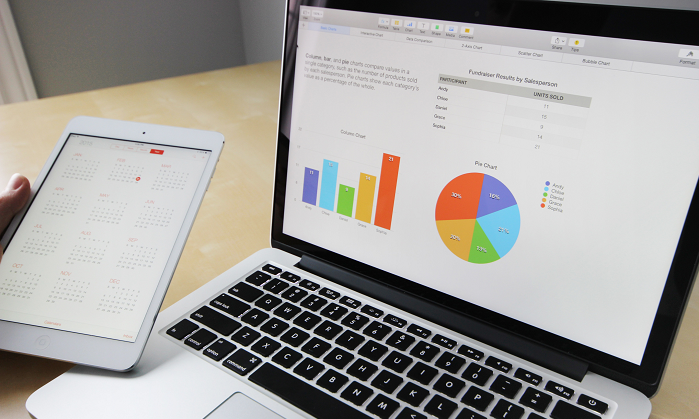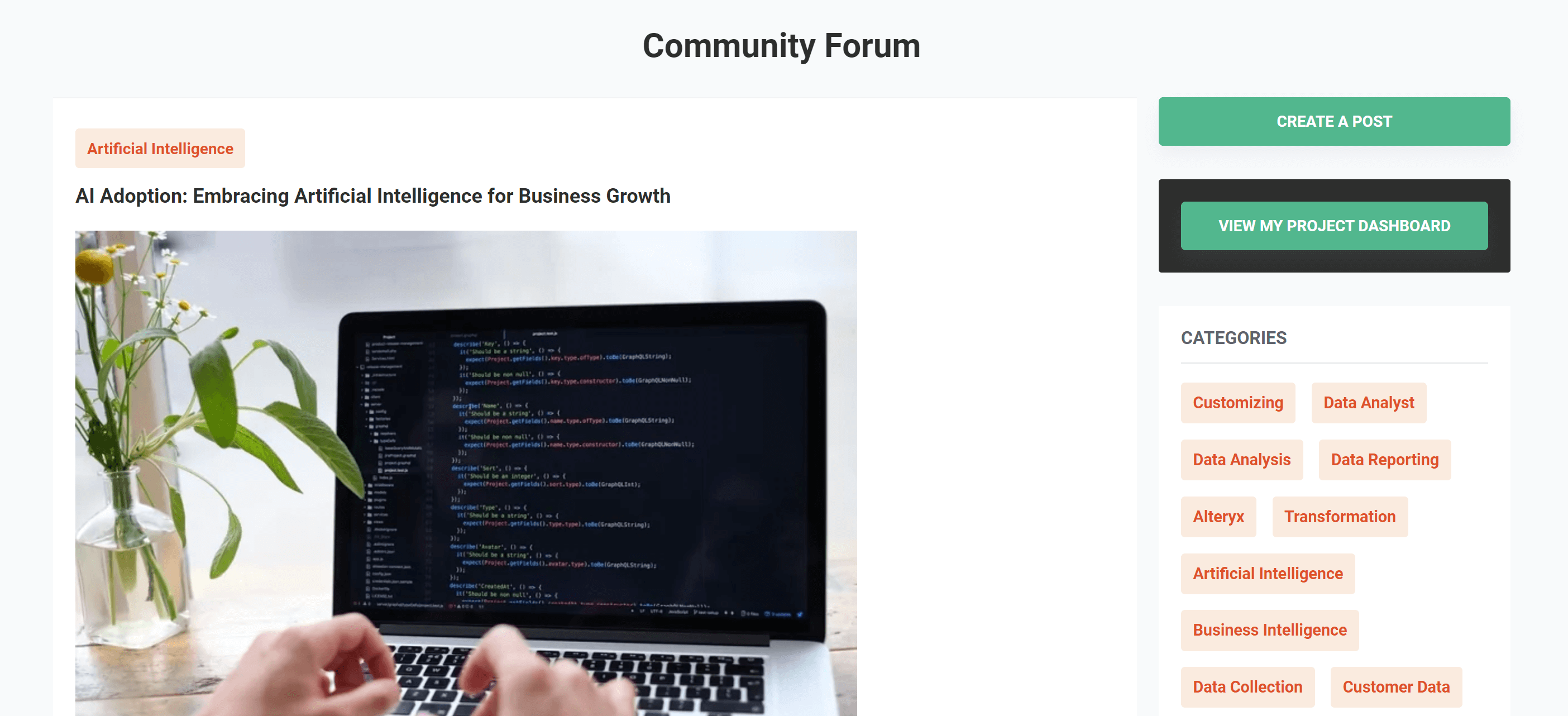Data Visualization: Storytelling with Data

Table of content
1. What is Data Visualization?
2. Why is Data Visualization Important?
3. Benefits of Data Visualization
4. Types of Data Visualization
5. How to Create Effective Data Visualizations
6. Storytelling Through Data Visualizations
7. The Role of Experts in Data Visualization
8. Conclusion
What is Data Visualization?
Data visualization refers to the process of presenting data in a graphical or pictorial format, making it easier to understand and analyze complex information. The human brain is wired to process visual information faster than text, which is why graphs and charts are so effective at telling a story with data.
By converting raw numbers and statistics into visual forms like charts, graphs, and maps, data visualization simplifies complex datasets and highlights essential insights. It allows viewers to quickly grasp trends, relationships, and patterns, facilitating informed decision-making across industries.
A Brief History
The concept of data visualization is not new. Its history dates back to the 15th century when a Flemish astronomer introduced the first line graph to represent statistical data. In the modern era, with the rise of Big Data, data visualization has become an essential tool to interpret vast and intricate datasets effectively.
Why is Data Visualization Important?
Modern businesses generate vast amounts of data from a variety of sources—internal and external websites, smart devices, proprietary systems, and social media interactions. However, raw data can be difficult to interpret and act upon. This is where data visualization becomes crucial. By transforming complex datasets into graphical formats, data scientists help decision-makers uncover relationships, recognize patterns, and identify trends that might otherwise remain hidden.
Data Visualization Importantance:
- Discover Trends
Visualizing data makes it easier to spot trends and patterns, like identifying profit and loss patterns quickly compared to reading through tables. - Provides Perspective
It offers a broader view, showing how individual data points fit into the bigger picture, such as understanding that higher sales don’t always lead to higher profits. - Saves Time
Tools like heat maps allow you to spot key insights instantly, such as losses, saving time compared to manually reviewing data. - Tells a Story
Data visualization doesn’t just present information—it tells a story that drives strategic decisions, helping businesses make informed choices and enhance operational efficiency.
In today’s competitive environment, businesses rely on these insights to fuel data-driven decision-making, anticipate market trends, and drive growth. In the next section, we will explore its advantages, disadvantages, and its role in the data science pipeline.
Benefits of Data Visualization
- Enhanced Data Comprehension
Data visualization simplifies the understanding of large datasets by breaking them into visual elements like charts, graphs, and heatmaps. This ensures even non-technical stakeholders can grasp complex information swiftly. - Improved Accuracy in Forecasting
By leveraging historical data through visualization, businesses can build predictive models to forecast future trends with higher accuracy. This is particularly beneficial in financial planning and market analysis. - Faster Problem Identification
Interactive dashboards and visuals enable businesses to spot bottlenecks or anomalies quickly. This leads to prompt problem resolution, saving time and resources. - Real-Time Monitoring and Insights
Modern data visualization tools provide real-time updates, allowing organizations to monitor ongoing processes such as sales pipelines, customer behaviors, or supply chain operations instantly. - Boosting Productivity Through Automation
Many data visualization platforms offer automated reporting, reducing manual efforts and enabling teams to focus on strategic decision-making. - Encouraging Data-Driven Culture
The ability to visualize and share data fosters a culture of evidence-based decision-making, ensuring that strategies are grounded in actionable insights rather than intuition alone.
Types of Data Visualization
Data visualization is a powerful way to represent complex data in an easily digestible form. Different types of charts and graphs are used depending on the type of data being analyzed and the insights being sought. Here’s a breakdown of some of the most common types:
1. Line Graphs and Charts
Line graphs are ideal for illustrating trends over time, helping to show changes and patterns. They are most commonly used to track continuous data, such as sales, temperature, or stock prices.
- Use Cases:
- Revenue growth over a quarter or year
- Tracking website traffic trends
- Monitoring performance metrics like customer engagement or production output
- Advantages:
- Easy to read and interpret over time
- Clearly shows trends and fluctuations
- Great for displaying multiple data sets on the same axis for comparison
2. Bar Charts and Column Graphs
Bar charts represent data through rectangular bars, where the length or height of the bar is proportional to the data value. Bar charts are particularly useful for comparing different categories of data.
- Use Cases:
- Comparing sales by region or product category
- Visualizing survey responses or demographics
- Showing performance comparisons between teams, departments, or periods
- Advantages:
- Easy to compare different categories or groups side by side
- Flexible for both categorical (e.g., product types) and numerical data
- Can be oriented horizontally or vertically (column graphs)
3. Pie Charts and Donut Charts
Pie charts and donut charts show parts of a whole. They are ideal for displaying proportional data, helping viewers to easily see how each category contributes to the overall total.
- Use Cases:
- Market share distribution among different companies
- Resource allocation or budget breakdowns
- Distribution of customer demographics (age, gender, etc.)
- Advantages:
- Simple and intuitive representation of proportions
- Effective for showing relative percentages
- Donut charts offer the same functionality but with a more visually appealing design (center space can be used for additional context or data)
4. Scatter Plots
Scatter plots represent data points on a two-dimensional plane, displaying the relationship between two variables. This type of visualization helps identify correlations, clusters, or trends within a dataset.
- Use Cases:
- Analyzing the relationship between sales and marketing expenditures
- Correlating customer age with product preference
- Identifying clusters in customer segmentation or market analysis
- Advantages:
- Highlights correlations or outliers in data
- Allows for the visualization of large data sets in a compact form
- Useful for analyzing patterns, trends, and distributions between two variables
5. Other Visualization Types
These include more specialized formats, each serving a particular type of analysis or data interpretation need.
- Word Clouds: Display a collection of words where the size of each word indicates its frequency or importance within the dataset. Useful for analyzing text data like survey responses, social media comments, or reviews.
- Treemaps: Represent hierarchical data using nested rectangles, with the area of each rectangle proportional to the value it represents. Ideal for visualizing large data sets with multiple categories, such as organizational structures or website analytics.
- Histograms: A form of bar chart that groups data into bins or ranges, typically used for showing distributions. They are particularly useful for analyzing the frequency of data points within certain ranges.
- Polar Area Charts: Similar to pie charts, but instead of sectors representing percentages, each sector’s area is proportional to a value. These are used to visualize cyclical data, like seasonal trends or patterns.
How to Create Effective Data Visualizations
1. Start with Questions, Not Data
Effective data visualizations don’t begin with raw data; they begin with a clear understanding of the problem you’re trying to solve. Start by asking fundamental questions such as:
- Who is the audience for the visualization?
- What message do you want to communicate?
- What action do you want the audience to take based on this data?
These questions help guide the visualization process, ensuring the design is tailored to the audience and effectively conveys the intended message. By focusing on the purpose of the visualization, you can select the right data and visualization types.
2. Select Relevant Data and the Right Visual Format
Once you have a clear understanding of the message, the next step is to choose relevant data that aligns with the goals. You must carefully select the most important data points and avoid overloading your audience with irrelevant information.
Next, choose the appropriate visualization format. Here’s a quick guide:
- Bar Charts: Great for comparing quantities across different categories.
- Line Graphs: Ideal for showing trends over time.
- Scatter Plots: Best for identifying relationships between two variables.
- Pie Charts: Useful for representing proportions or parts of a whole (but use them sparingly to avoid misinterpretation).
- Heatmaps: Effective for showing the intensity of data across two dimensions.
Selecting the right format helps viewers easily digest and understand the insights you’re presenting.
3. Apply Sound Visualization Design Principles
The design of visualization plays a crucial role in how easily the audience can interpret the data. Here are some design principles to follow:
- Consistency: Use consistent colors, fonts, and symbols throughout the visualization. This helps to avoid confusion and makes the data easier to follow.
- Simplification: Avoid unnecessary elements that can distract from the core message. For example, don’t use 3D effects or excessive gridlines that clutter the chart.
- Labeling: Ensure that all axes, legends, and data points are clearly labeled. This prevents ambiguity and makes it easier for viewers to understand the data at a glance.
- Color Choice: Choose colors that are easy to distinguish, even for those with color blindness. Use contrasting colors to highlight important data points or trends.
4. Consider Interactivity
Interactive data visualizations can add significant value by allowing users to explore the data themselves. Features like tooltips, hover effects, and clickable elements allow users to engage with the data, dive deeper into specific areas of interest, and personalize their experience. Tools like Tableau, Power BI, and Google Data Studio are excellent for creating interactive visualizations.
Storytelling Through Data Visualizations
Data visualization has become a powerful tool for communicating complex data in a way that is both understandable and engaging. By transforming raw data into visual formats like charts, graphs, and maps, businesses can effectively tell a story that not only captures attention but also drives meaningful decisions. The idea is to move beyond mere presentation of data and instead shape it into a narrative that is insightful and actionable.
- The Power of Data Storytelling
The primary goal of data storytelling is to create a seamless connection between raw data and decision-making. This involves interpreting data through a narrative that provides context, highlights key insights, and makes the information relatable to the audience. Data storytelling is more than just presenting figures—it’s about weaving a coherent narrative that leads the audience through the story, revealing patterns, trends, and insights that influence decision-making.
- Why It Matters
In today’s data-driven world, businesses are overwhelmed with vast amounts of data. However, raw numbers alone don’t convey the meaning or significance of the data. Storytelling through data visualization helps bridge this gap, turning abstract numbers into a digestible and compelling message. This enables stakeholders to quickly grasp key insights, making it easier for them to take informed actions.
Tools for Creating Impactful Visuals
- Microsoft Excel
A versatile tool for basic charts and graphs, ideal for simple visualizations. - Power BI
A robust platform for interactive, real-time dashboards that connect to various data sources. - Tableau
Known for its stunning, interactive visuals, Tableau is excellent for handling large datasets. - Google Data Studio
A free tool for creating customizable, shareable reports, integrating easily with Google services. - D3.js
A JavaScript library for advanced, custom visualizations, great for developers with coding skills.
The Role of Experts in Data Visualization
Benefits of Consulting Data Visualization Professionals
Hiring data visualization professionals ensures your data is effectively communicated and accurately represented. They have the expertise to choose the right tools and design visuals tailored to the target audience, transforming complex data into clear, actionable insights. By using advanced tools like Tableau and Power BI, they create interactive and dynamic visuals that engage viewers and facilitate quick decision-making.
These experts streamline the process, saving businesses time and resources by efficiently organizing and presenting data. Their ability to tell compelling stories through visuals helps highlight trends and key takeaways, improving overall communication, enhancing decision-making, and ensuring consistency and accuracy across all platforms.
Pangaea X: Expert Solutions for Data Visualization
Platforms like Pangaea X connect businesses with skilled freelancers specializing in data visualization. By choosing to hire data visualization experts, organizations can leverage professional expertise without the overhead costs of a full-time team. These professionals help design visuals tailored to specific business needs, ensuring clarity and engagement.
Data visualization is more than just charts and graphs. It’s about telling stories that inspire action and provide clarity in decision-making. By leveraging expert knowledge and following best practices, businesses can unlock the full potential of their data.
Conclusion:
Data visualization turns complex data into clear, actionable insights by revealing patterns, trends, and relationships that raw data can’t easily show. It simplifies decision-making through engaging visual storytelling, helping businesses make informed choices. With tools like graphs and charts, data becomes more accessible and easier to analyze. Consulting professionals ensure accuracy and impact, while platforms like Pangaea X connect businesses with expert freelancers to create tailored visual solutions. Ultimately, data visualization empowers businesses to unlock the full potential of their data, driving growth and efficiency.
Get your data results fast and accelerate your business performance with the insights you need today.



